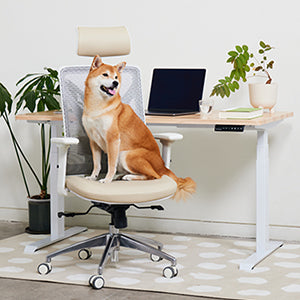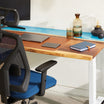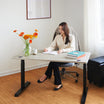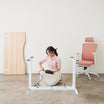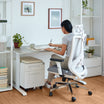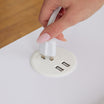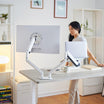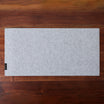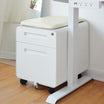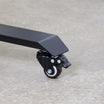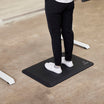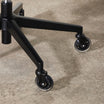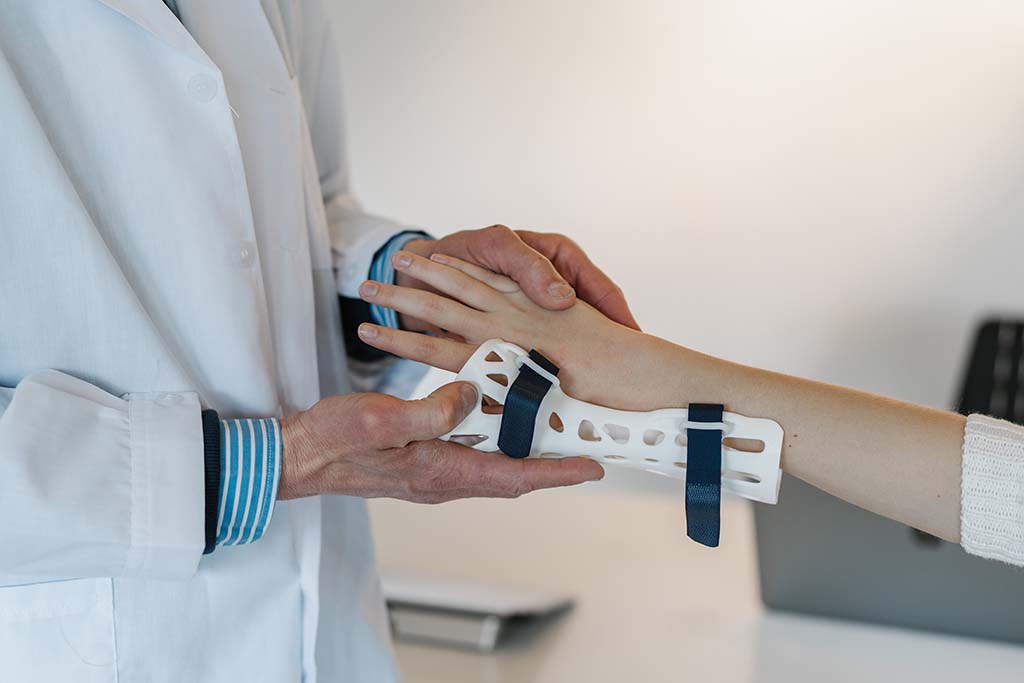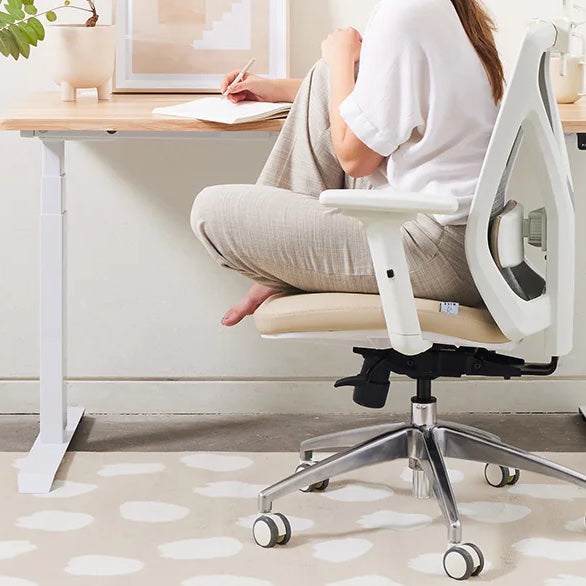WHAT IS ACUTE CARPAL TUNNEL SYNDROME?
Carpal tunnel syndrome is a common condition that causes pain, numbness and tingling in the hand and arm. The condition occurs when one of the major nerves to the hand — the median nerve — is squeezed or compressed as it travels through the wrist.
Acute carpal tunnel syndrome is characterized by rapid onset of median neuropathy caused by sudden increases in carpal tunnel pressures, which leads to ischemia of the median nerve. The most common cause is traumatic injury, but a notable contributor is the repetition of frequent hand motions like typing on a keyboard, the tasks routinely performed by office workers every day. An astounding 10% of adults will develop carpal tunnel syndrome during their lifetime, and this number is only rising with the continuous growth of the proportion of office jobs in the economy.
CAN OFFICE WORK CAUSE CARPAL TUNNEL?
The standard desk height in North America is 29” from floor to surface, ignoring the diversity of heights and arm lengths among workers, and the resulting issues that arise from poorly-fitted furniture. In this way, office workers are at an especially elevated risk of developing the syndrome. The every-day repetitive motions of an office job place pressure on the median nerve, and the improper posture that workers everywhere are exhibiting as a result of a discommodious office setup causes further compress in the passage, intensifying the symptoms of the condition.
WHAT ARE THE SYMPTOMS OF CARPAL TUNNEL SYNDROME?
Symptoms of carpal tunnel syndrome include:
- Pain or numbness in one or many of the fingers, hands, or wrists
- Pain or numbness from the forearm towards the shoulder
- Weakness or clumsiness to grip objects and perform fine-motor functions
- Burning or tingling sensation in the arms or wrists
- Swelling accompanying the numbness or tingling
HOW CAN YOU PREVENT CARPAL TUNNEL?
In most patients, carpal tunnel syndrome gets worse over time, so early diagnosis and treatment are paramount. When it comes to taking proactive measures, assistive technology can help to reduce or avoid CTS altogether. What are the best assistive devices for carpal tunnel syndrome? Here, we have recommendations for desk setups to prevent the development of carpal tunnel syndrome. You might be wondering, as an office worker, what is the best mouse pad, office chair, or desk for preventing carpal tunnel? Here we will introduce you to some of the factors to consider when buying furnishing for home offices, and useful tips to prevent carpal tunnel.
HOW TO SELECT OFFICE FURNITURE FOR CARPAL TUNNEL?
Now to highlight the important features that you can use as a guide when choosing a chair that best fits your needs and preferences. Features to look for when buying the Best Office Chair for carpal tunnel. If you are going to spend most of your day sitting down, it is only wise that you choose a chair that will give you the right posture. Below are some of the features that you should look for in an office chair for assuaging carpal tunnel.
- Size
Some chairs are not able to accommodate certain frames such as a large seating posterior comfortably. As such, it is important to shop around for the most ideal chair for your body size. Also, take into consideration the weight capacity that the chair can take as well as its size. Some chairs have short backs that can not support a person with a long torso. Chairs come in different sizes thus settle for one that best fits your body size.
- Adjustable height
It is important to get a chair with adjustable height. This will enable you to adjust the chair according to your own height and the height of your work desk thus ensuring your arms and feet are comfortable. Your feet should be flat on the floor, your thighs roughly parallel to the floor, and your arms comfortably on the desk. Sitting in the correct posture allows you to type comfortably.
- Adjustable armrest
Consider a chair that allows you to adjust the armrest according to your needs. It is important to have your forearms rest on your work desk at the right angle to give you good space to type without straining. This enables you to be more productive at work. Some chairs have armrests that pivot inwards thus able to support the entire length of your forearm, further improving your comfort.
- Lumbar support
When the chair is able to support your lower back comfortably, then your posture is improved. A good posture means there is minimal stress on your body, allowing you to rest your arms on your desk. This allows you to type easily without putting any strain on your carpal tunnel. Easy movement. Pick a chair that will be able to complement your movements freely in the workplace as you may need to perform several tasks on your desk that require the movement of your arms. A chair that allows you to move with ease saves you on time and significantly improves your overall productivity.
WHAT ARE THE BEST PRODUCTS FOR CARPAL TUNNEL?
To make your search easy, RISEDESK offers cutting-edge, modern ergonomic office furniture from A to Z.
The best mouse pad for carpal tunnel is the Anti-Fatigue Standing Mat, which helps to reduce any pain and fatigue from standing on hard surfaces.
When it comes to the best office chair for alleviating the effects of carpal tunnel, RISEDESK’s Ergonomic Office Chairs are skillfully designed to help heal sitters from back and other body muscle aches, pain, and tension.
Our Monitor Desk Mounts helps to reduce, relieve and prevent neck tension and shoulder pain.
Nothing beats the Rise Standing Desk, an adjustable electric standing desk designed to last that features Dual or Triple Motor frames with incomparable quality, and a state-of-the-art LED Display Memory Keypad that is both intuitive and user-friendly.
For Filing Cabinets, we recommend a quiet, highly maneuverable filing cabinet with 3 lockable drawers to give you the organization and peace of mind you deserve.
To learn more about our products and services, be sure to check out our FAQ page or browse our ergo mindfulness blog for more helpful articles on ergonomics in the workplace.

